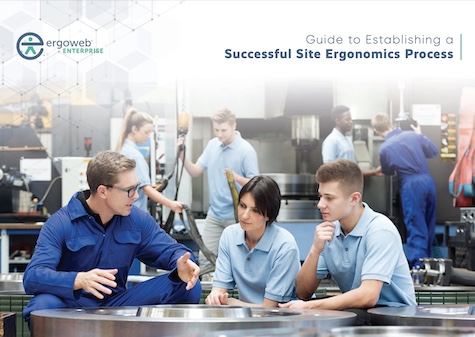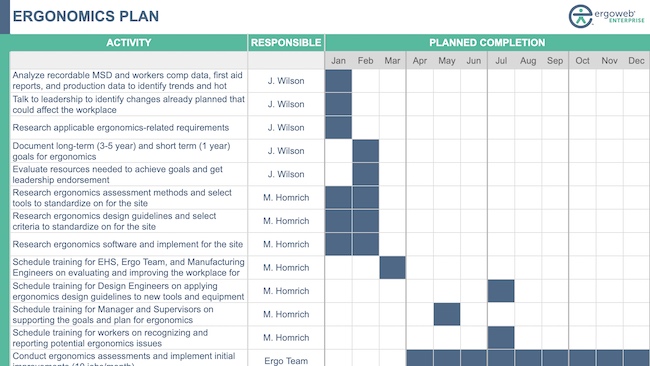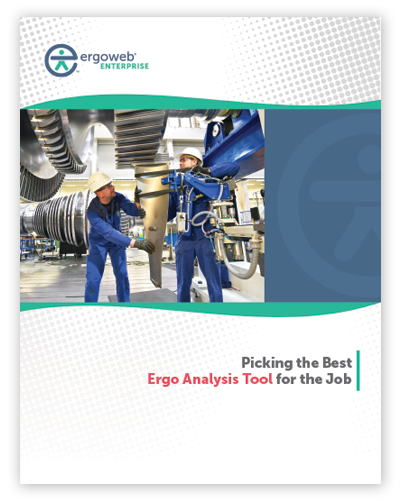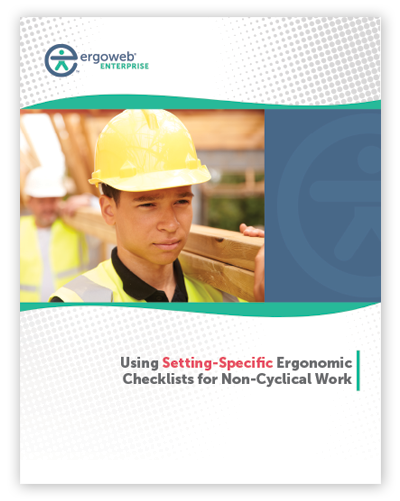Ergoweb® Learning Center
We’ve published and shared thousands of ergonomics articles and resources since 1993. Search by keyword or browse for topics of interest.
Downloadable Guides
Open Access Articles
July 19, 2011
The seeds for Ergoweb were sown nearly 19 years ago. Peter Budnick reviews Ergoweb's rich history, sharing a rare screenshot from a 1994 web site, and reaches out to customers and community members to help the company chart its future.
July 6, 2011
The Human Factors and Ergonomics Society invites you to attend the 2012 Symposium on Human Factors and Ergonomics in Health Care, to be held March 12
July 5, 2011
Researchers Blackstone, Karr, Campo and Johnson investigated the physical exposure differences between children and adults when using standard sized input devices and smaller input devices. The results suggest something that ergonomists are well aware of -- something we hope designers and manufacturers will one day embrace -- One size does not fit all. The study investigates the effect of computer input device size on performance, posture and force.
June 28, 2011
Researchers Boda, Bhoyar and Garg conducted a study with the intention to validate the ability of the NIOSH Revised Lifting Equation and the University of Michigan 3D Static Strength Prediction Model (3DSSPP) to predict the future occurrence of work-related low back pain (WLBP). In this research review reprinted from The Ergonomics Report, reviewer Peter Budnick describes the results as mixed, bringing into question both the methods used to validate complex human-system models, and the ability of ergonomists to evaluate lifting/lowering tasks and predict associated risk of WLBP with certainty.
June 23, 2011
"Lean" management philosophy is an evolving systematic approach to building and maintaining a viable organization with sustainable processes. Many organizations are pursuing Lean to remain competitive, but unfortunately, many misunderstand the necessary ingredients for a true Lean Journey, including the most important principle, Respect for People. In this reprint from The Ergonomics Report, Peter Budnick explains why ergonomists are uniquely qualified to lead and participate in successful Lean Journeys, noting that ergonomics IS Respect for People, and our contributions are critical to optimizing organizational performance.
June 20, 2011
Want to hear some wisdom from Hal Hendrick? Read this book, which he wrote while battling the cancer that ultimately took his life. It's an inspiring testament to Hal's enduring optimism, and to his commitment to mentor others. He was inspired to write the book by former students, many of whom relayed success stories from their own lives derived from what they learned from Hal. In "It All Begins With Self," Hal shares evidence-based models from psychology to build a foundation for improvement for those seeking to become better managers. Not coincidentally, the premise, that it all begins with self, recognizes that being a better manager often requires and results in becoming a better you.
June 8, 2011
Job announcement -- Cintas is looking for an Ergonomist to identify musculoskeletal disorder (MSD) risks throughout all Cintas business divisions -- apply now.
June 7, 2011
Relying on first-hand experience, Peter Budnick shares a tale of two different hospitals: one with ergonomically designed processes, the other without. He uses the experience to review the ingredients that make an effective, sustainable organization, and the critical role that human-centered design and systems integration plays in such organizations. Ultimately, it's all about Respect for People, the core principle in ergonomics, that makes or breaks a company -- and all the people that company touches -- in the long run.
June 1, 2011
There's been a lot of talk lately about ergonomic product certification, and Peter Budnick takes readers on a tour of the topic, drawing from work he's done on the question over the last 10-15 years. In this article, Part 2 of his series, he expands the model of what it means to be ergonomic, and how products and processes might be assessed in a certification process. He draws on definitions put forth by the International Ergonomics Association, and reviews their EQUID Design Process Requirements, identifying it as a solid starting point for a robust, inclusive and credible certification system.






